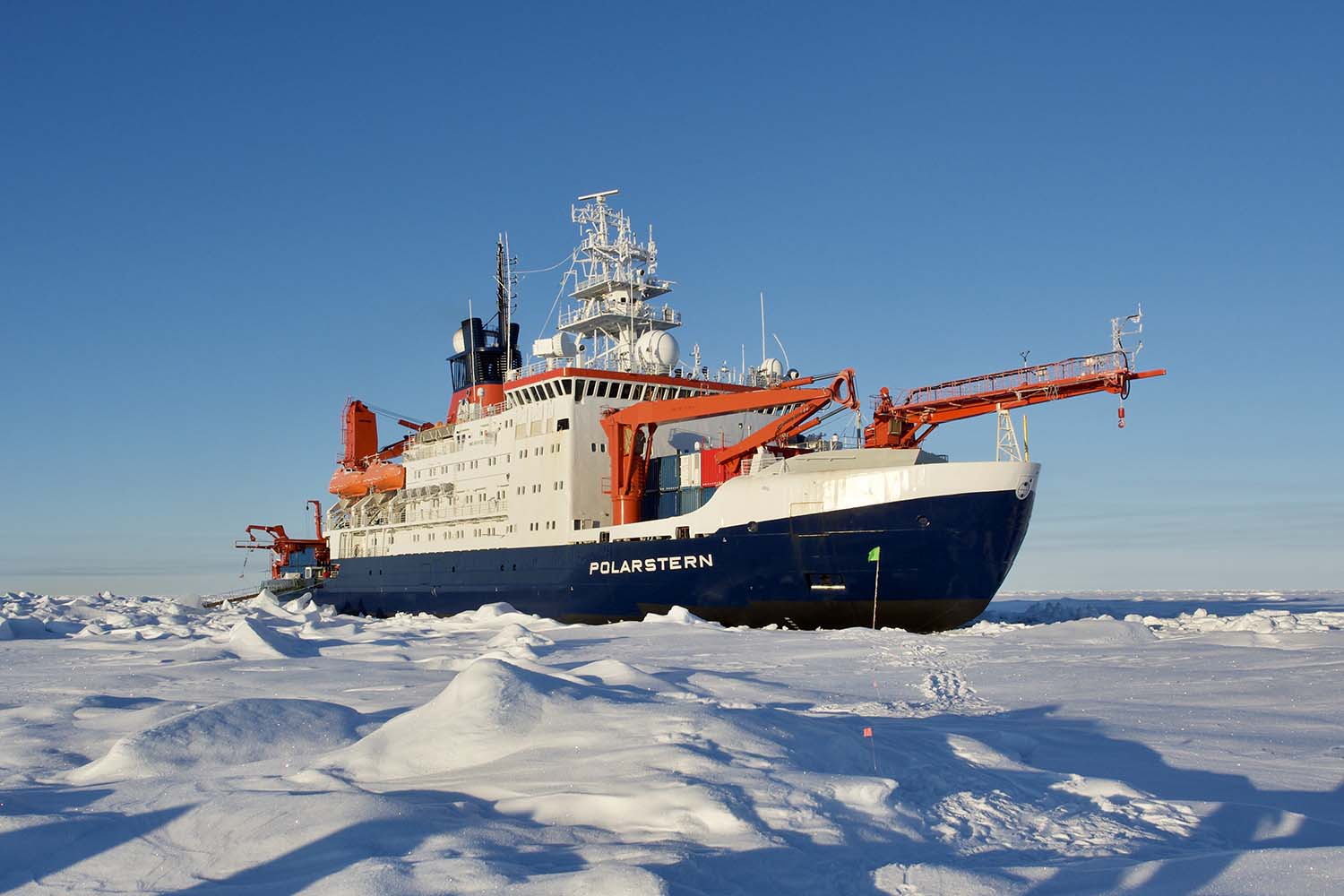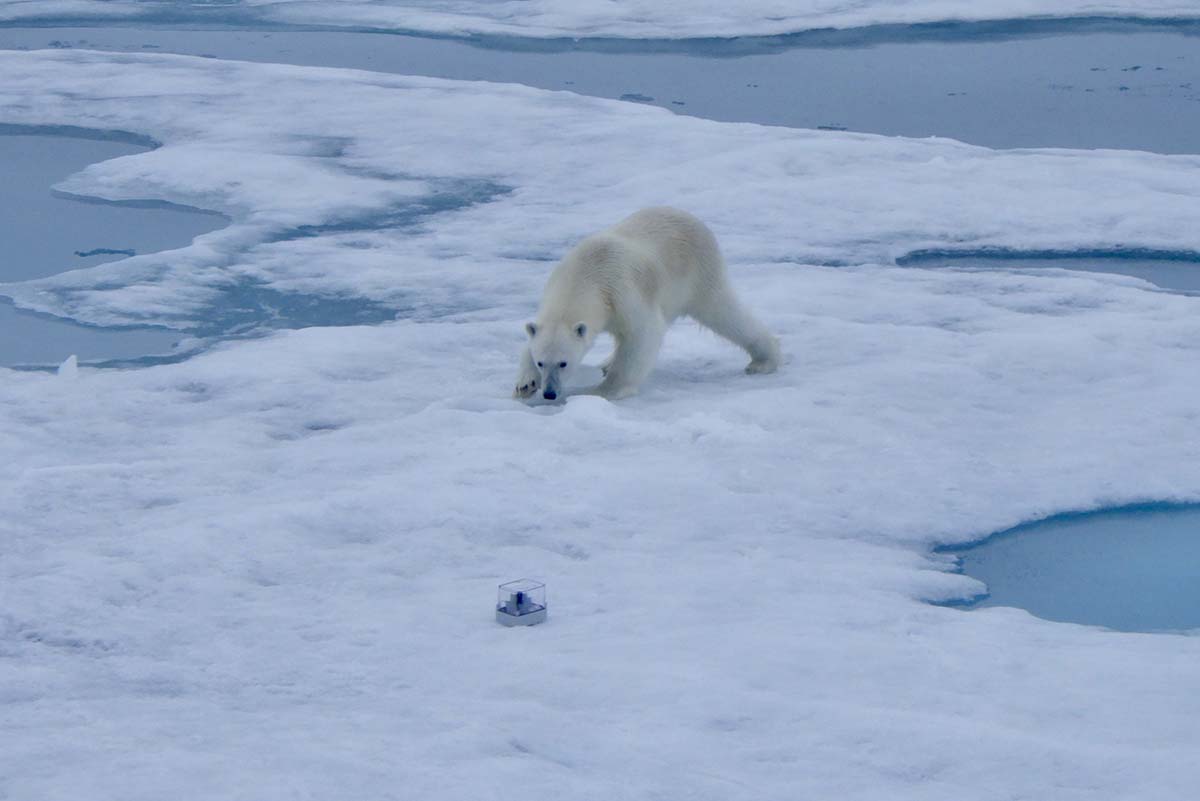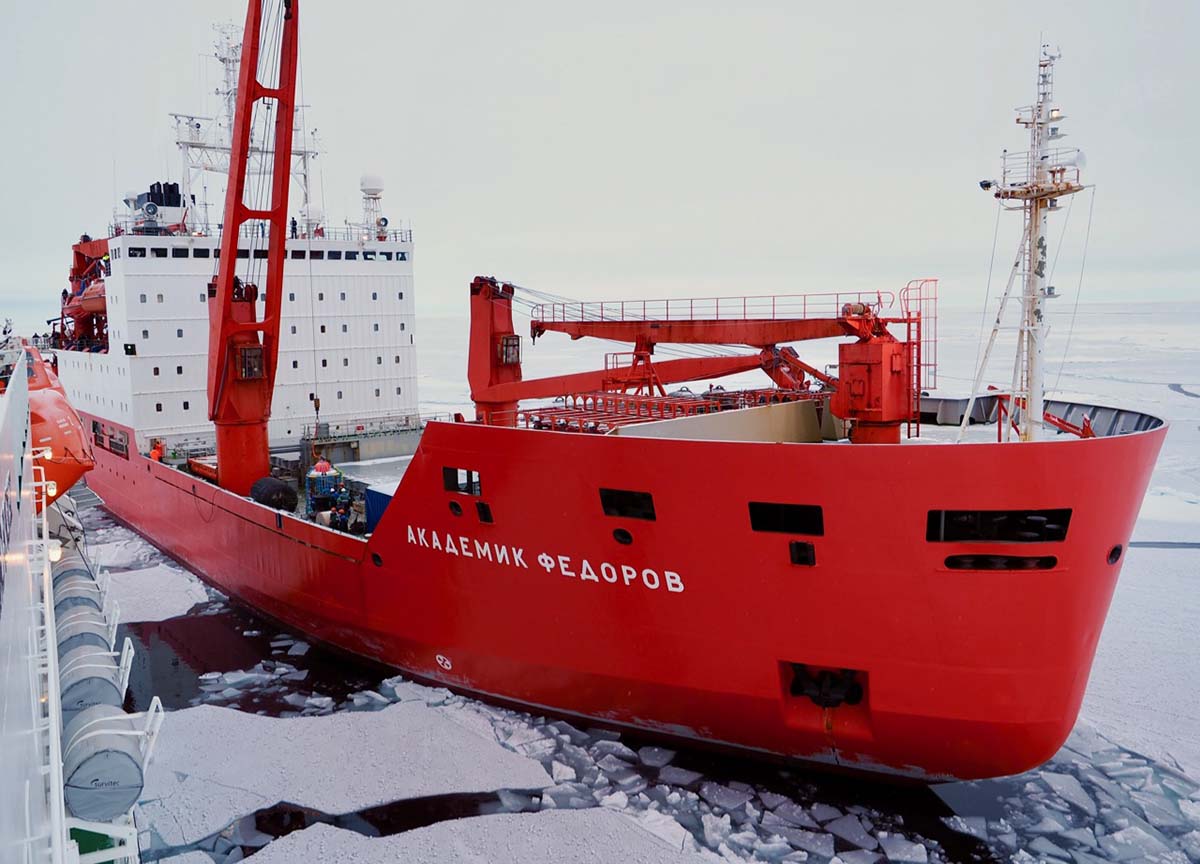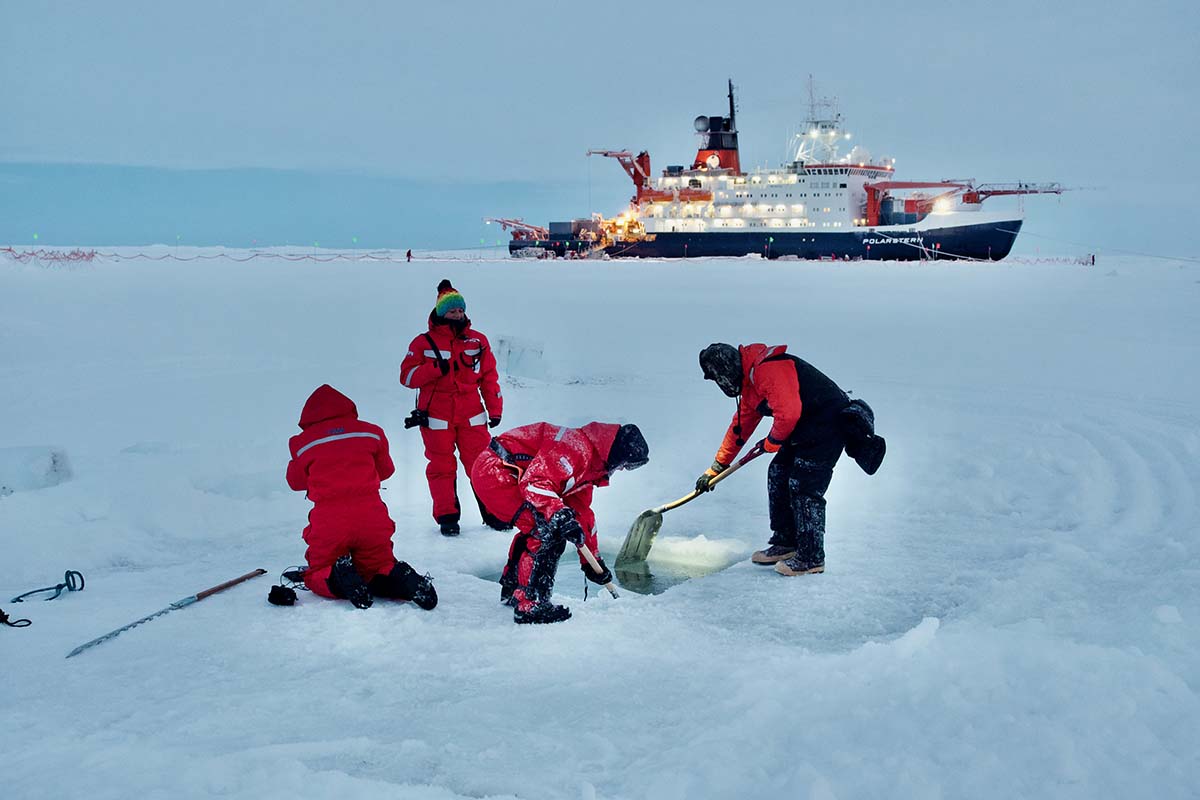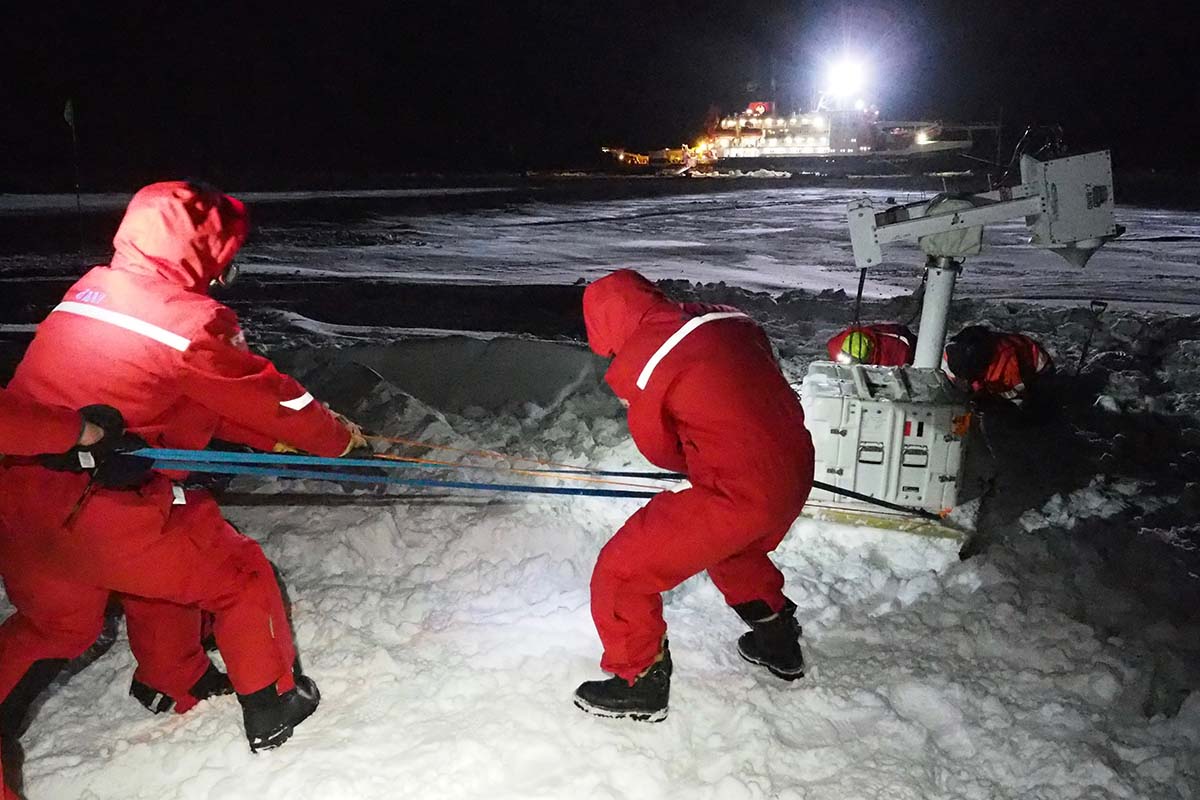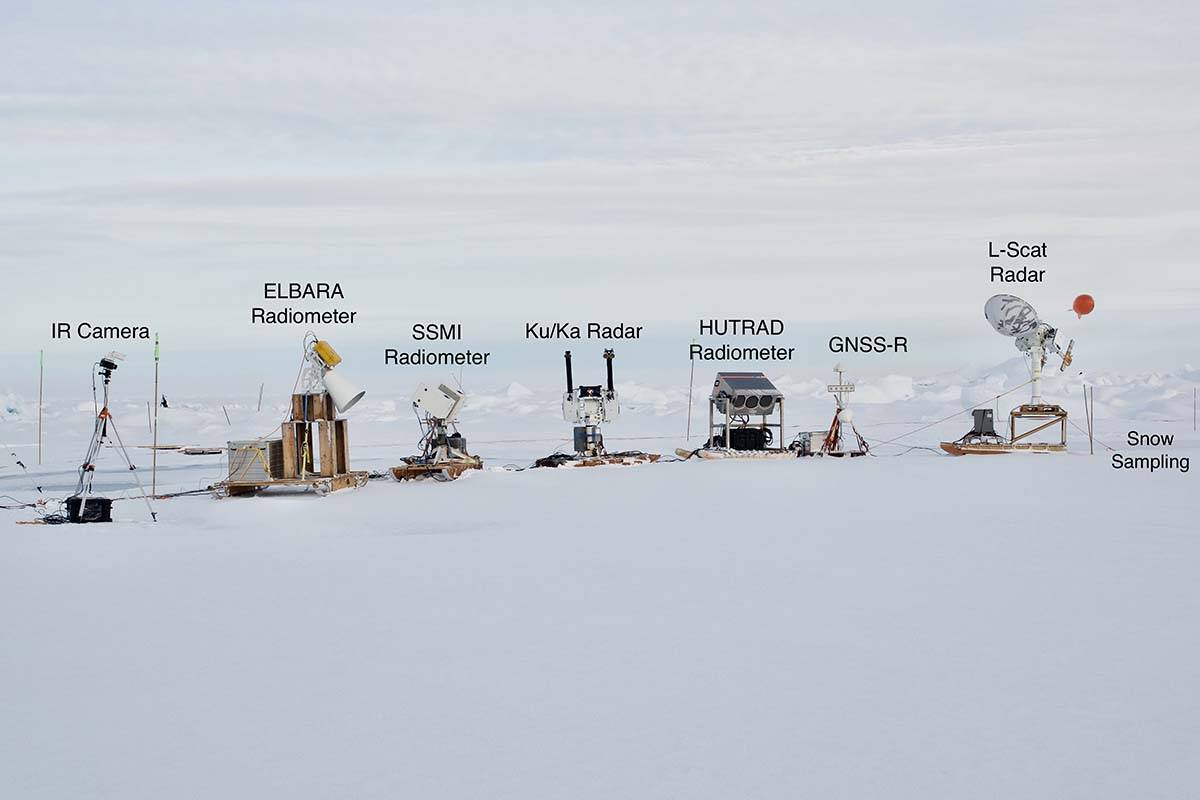Satellites and Ships: Researchers Combine Data Sources to Study Arctic Warming
The multidisciplinary German consortium (AC)³ is focused on understanding what drives warming in the arctic. Scientists and engineers from across the country rely on DFN’s X-WiN national research and education network to access and organize data from far-flung remote sensing instruments and to efficiently share insights in pursuit of better understanding the precious, rapidly changing arctic.
August 30, 2024
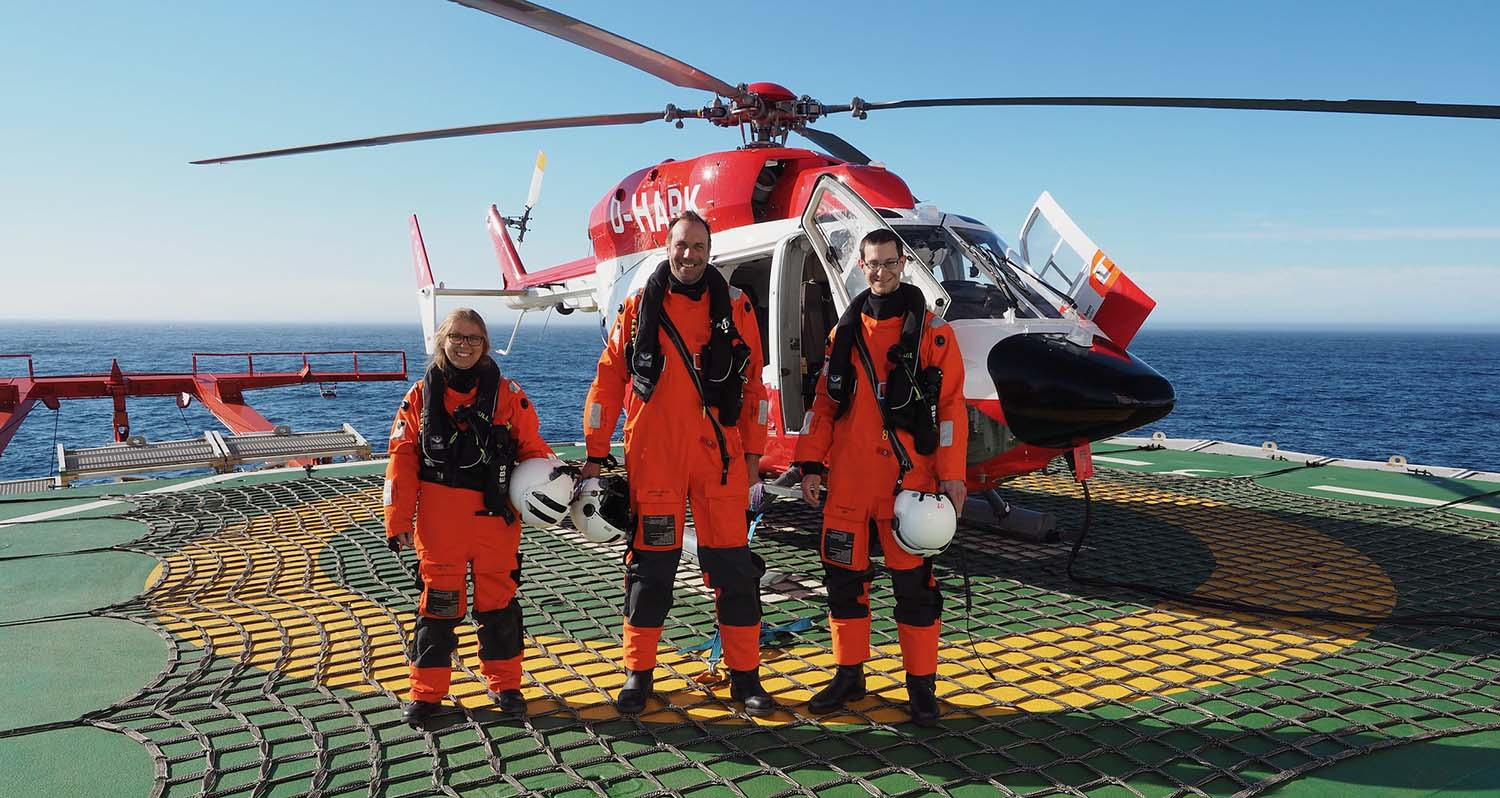
From measuring sea ice thickness to taking sensitive samples to collect data during expeditions: Lena Buth, Andreas Walbröl and Gunnar Spreen work on sea ice changes in the arctic. Photos: Gunnar Spreen
In the late 1800s, scientists studying the arctic began hypothesizing that the increase in carbon emissions corresponding to rapid, global industrialization could be influencing the Earth’s climate. In recent decades, technological advancements such as high-altitude aircraft, satellites, and high-speed networks provided new tools for researchers measuring smallscale changes to the arctic that could have major implications for the long-term climate health of our planet.
These tools help scientists keep track of the arctic’s seasonal and annual changes in ice thickness, temperature, and concentrations of particulate matter and other pollutants in the atmosphere. Unfortunately, the data is painting an increasingly dreary picture: the world’s largest climate consortium, the Intergovernmental Panel on Climate Change (IPCC), an international body headquartered in Geneva, Switzerland, has unequivocally stated that since detailed studies began in the 1970s, the Earth has been warming at an accelerated rate, and that the rate is at least double as fast in the arctic as it is near the equator. This phenomenon is known as arctic amplification.
In the interest of better understanding what is driving accelerated arctic warming, a multi-disciplinary, multi-institutional team of researchers in Germany in 2016 received funding from the German Research Foundation (DFG) for a project titled, “Arctic Amplification: Climate-Relevant Atmospheric and Surface Processes and Feedback Mechanisms,” or simply (AC)³. Headquartered at the University of Leipzig with principal investigators from that institution, the University of Bremen, and the University of Cologne, the project brings together climate scientists, oceanographers, atmospheric scientists, information technology specialists, and others to understand the main factors driving these changes.
“We all focus on covering different aspects of what is needed to understand what is driving these changes,” said Dr. Gunnar Spreen, (AC)³ vice-speaker and researcher at the University of Bremen and a principal investigator on (AC)³ subprojects focused on studying sea ice changes. “Here in Bremen, we are known for a focus on remote sensing satellite data. Each institution has its specialties that it brings to the consortium.”
Now in the project’s third and final phase, Spreen and his collaborators are focused on translating a massive trove of data coming from these different sources to better understand the processes causing this accelerated behavior compared to other parts of the world.
Data convergence determines arctic amplification drivers
Much of Spreen’s research focuses on using data from research ships and aircrafts to get a clearer understanding of data coming from satellites. In fact, in 2019-2020, he was aboard the research vessel Polarstern – operated by the Alfred Wegener Institute, one of the (AC)³ project partners – for 5 months as part of the year-long MOSAiC ice drift expedition. “Gathering closeup data from ships helps us understand and interpret our satellite data better,” he said.
In (AC)³, his group is focused on understanding how certain feedback loops can compound sea ice melt. Among other topics of interest, the team has focused in recent years on surface albedo effects, or how the light reflects or absorbs on different surfaces and how that can indirectly increase ice melting.
During the project’s second phase that just recently ended, the team used data coming from instruments on board Polarstern, aircraft recording high-resolution videos of the arctic, and satellite imagery measuring temperature, radiation, pollutants present, and many other data points to see where and when albedo effects play the strongest role in accelerating sea ice melt. The team found that warming did not purely correspond to seasonal effects – it did not uniformly melt faster as the arctic transitioned from spring to summer – but were heavily influenced more by pools of melted ice forming on the ice surface, called melt ponds.
When ice is thick and largely snow covered, the abundance of white reflects most light hitting the ice surface. When puddles start to form, though, they create darker patches along the ice that absorb more light, which generates more heat, which melts more ice and ultimately creates more puddles – the textbook definition of a positive feedback loop contributing to sea ice melt in summer.
Spreen noted that melt ponds play a nuanced but significant role in driving arctic warming, and by furthering our understanding of this process, the consortium creates its own positive feedback loop of sorts: many climate simulations run by computational climate scientists calculate sea ice changes as largely seasonally driven phenomena, and his team’s work helps improve these researchers’ models for more accurate simulations of future climate scenarios
Research and education networks help enable large consortia
(AC)³ consists of 22 scientific projects across five different research clusters, but a sixth cluster is focused on one of the biggest challenges for the project: managing, moving, securing, sharing, and organizing terabytes worth of data.
“The greater project has consistently had more than 20 scientific sub-projects, and many of them have multiple principal investigators that are at different institutions. It is a very interconnected project,” said Dr. Matthias Buschmann, researcher at the University of Bremen and principal investigator on the “INF” subproject dedicated to the project’s data management needs.
Buschmann’s team not only ensures that data is accessible to researchers across the wider consortium, but also that data is being managed according to the so-called “FAIR” principles of data management – that the data are findable, accessible, interoperable and reusable. He credited the German Research Network’s (DFN’s) X-WiN national research and education network for enabling high-speed data movement between institutions but gave his highest praise to the network’s reliability. “It is at the point where most people in the project don’t have to think about sending or receiving data, and that is exactly what you want from infrastructure – you should not need to think about it and whether it works or not,” he said.
Buschmann noted that while some sub-projects have minor data management needs, satellites taking daily snapshots of a large geographic region or airplanes taking hours of video footage generate massive amounts of data that needs to not only move efficiently from one point to another, but also need to be strategically managed to avoid moving large volumes of data more than necessary. The INF team develops proactive strategies to minimize superfluous data movement and ensure efficient data retrieval and access for the research teams. As part of the greater (AC)³ project, Buschmann sees his group’s role not only as helping researchers efficiently move and manage large datasets, but also ensuring the long-term archival of data recorded by the consortium, making them accessible to subsequent research teams interested in arctic amplification research. For Spreen, the wealth of data collected during the 12-year project is its greatest achievement. “The legacy that we want to leave with this project is the data,” he said. “In following these FAIR principles of data management, we are making sure that this data is well documented and accessible for others. In doing this part well, we make the work easier for my group and everyone else.”
Text: Eric Gedenk (DFN-Verein)
Arctic expedition to observe sea ice changes
Photos: Gunnar Spreen
